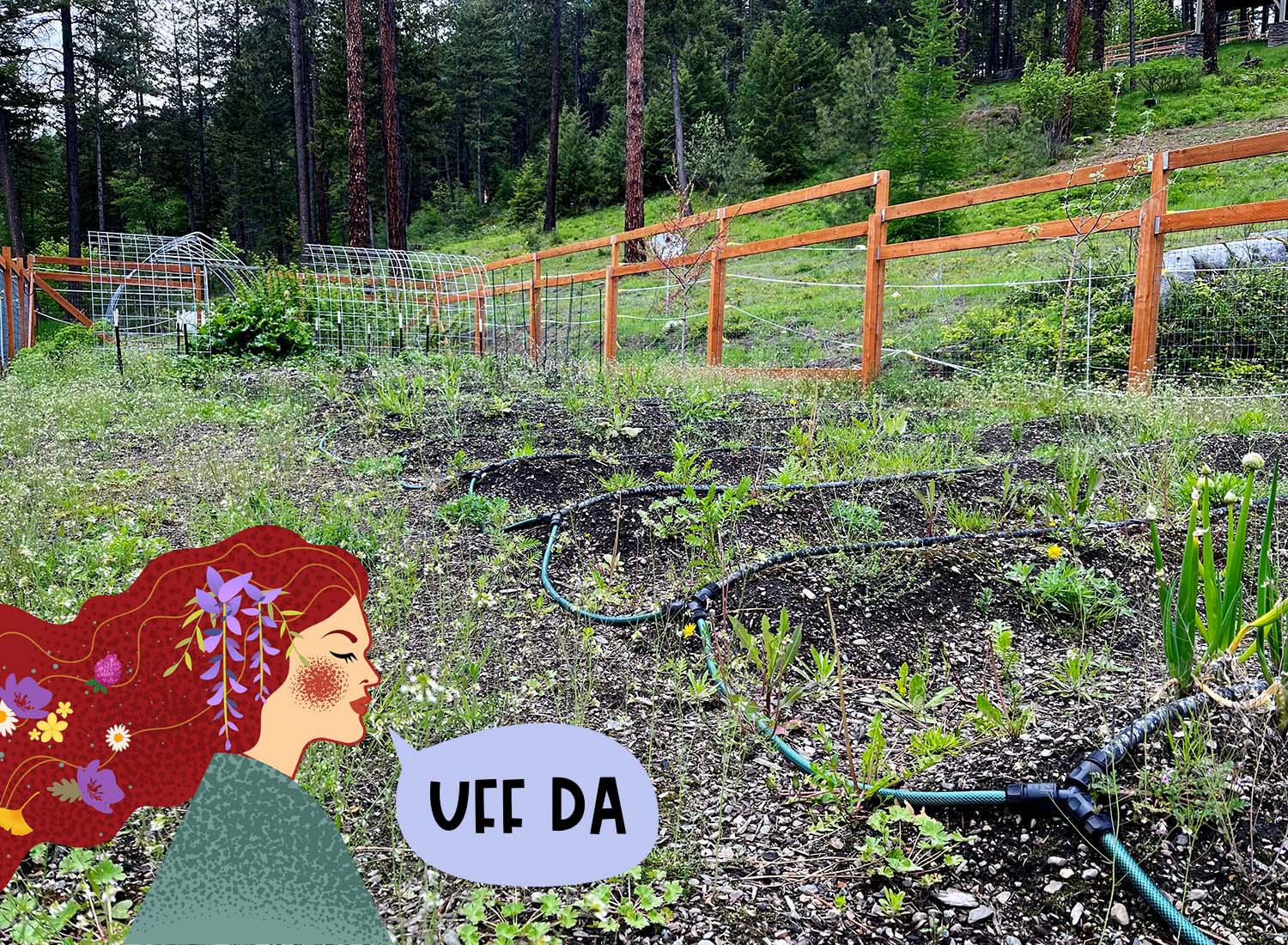The first weeding job of the year preparing my vegetable garden for planting is always the most intimidating. It’s easy to maintain throughout the growing season, but preparing the beds for planting is time consuming and tedious.
A great way to transform the tedium into something engaging and even (dare I say it?) FUN — is to pay attention to the weeds you’re pulling. So many of what we refer to as “weeds” are actually useful plants growing in an inconvenient place. Learn what you’ve got and what you can do with them, and the task of weeding transforms into a treasure hunt to replenish dwindling herb jars!
(BTW, if you have weeds, do yourself a favor and pick up one of these bad boys. Hula hoes, also known as horseshoe hoes, are a game changer for keeping weeds on the run before they have a chance to reseed themselves — no bending over required! Hands down, my favorite labor-saving garden tool.)
Malva neglecta
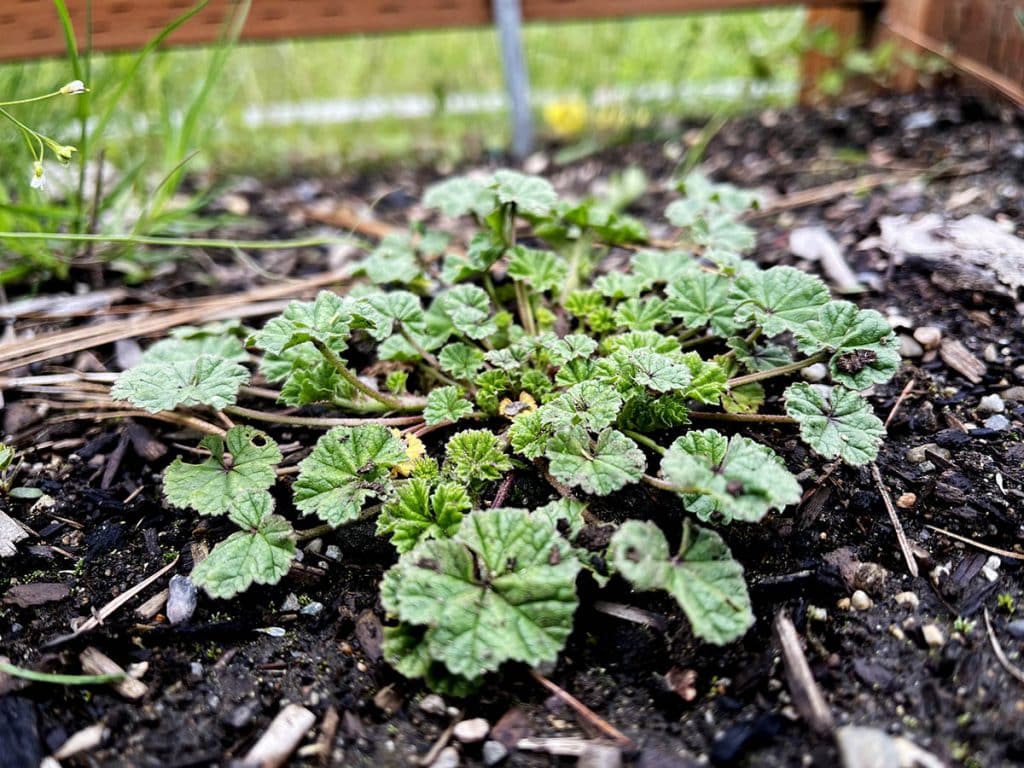
Common mallow (Malva neglecta) has many of the same properties as its cousin the marshmallow (Althea officinalis). It doesn’t produce the impressive roots marshmallow is famous for, but Malva’s leaves, flowers and roots have similar mucilaginous properties and can be used interchangeably with marshmallow. It makes a soothing tea for a dry, scratchy throat, and its demulcent, emollient polysaccharides make it a lovely addition to skincare products.
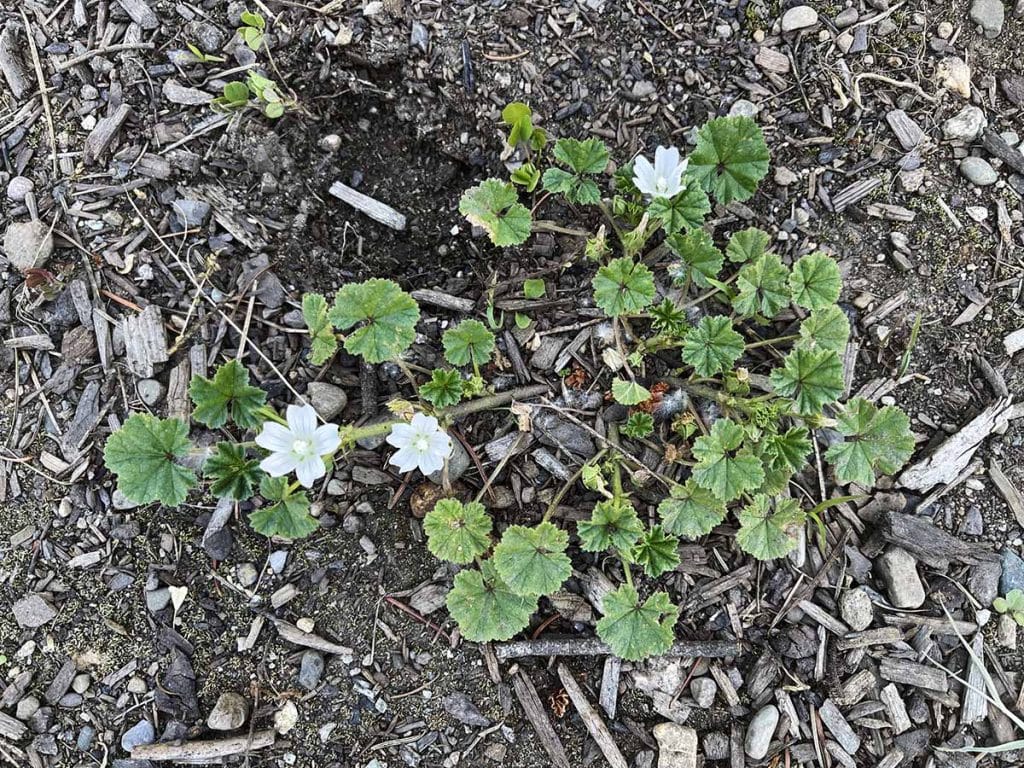
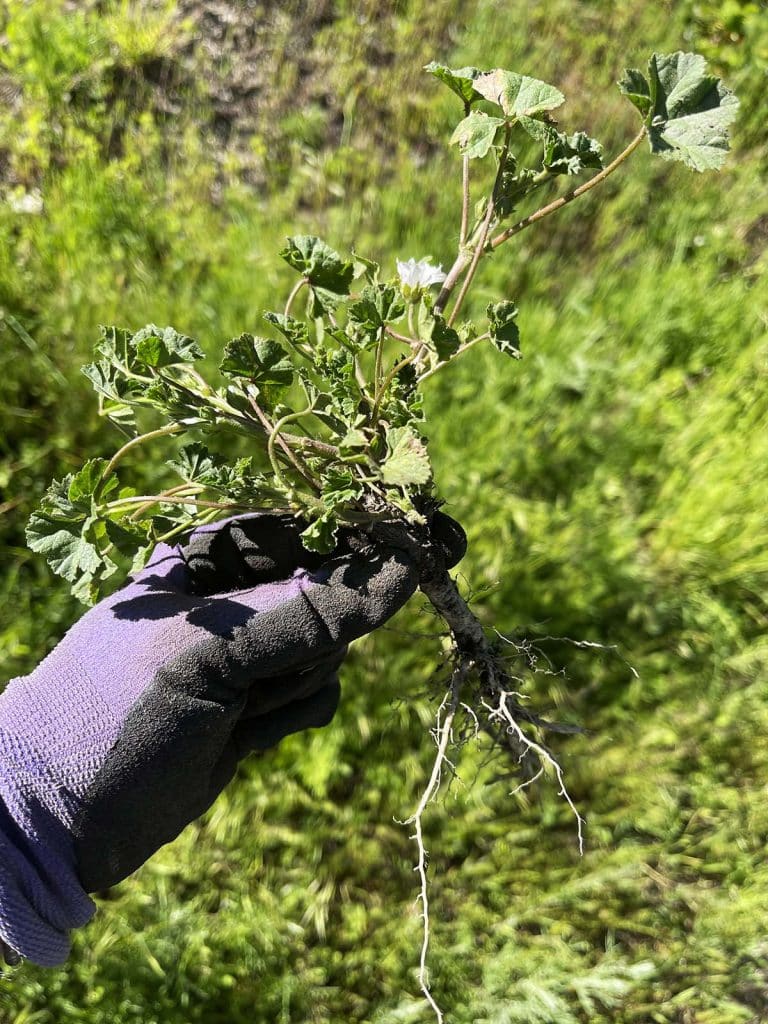
Trifolium pratense
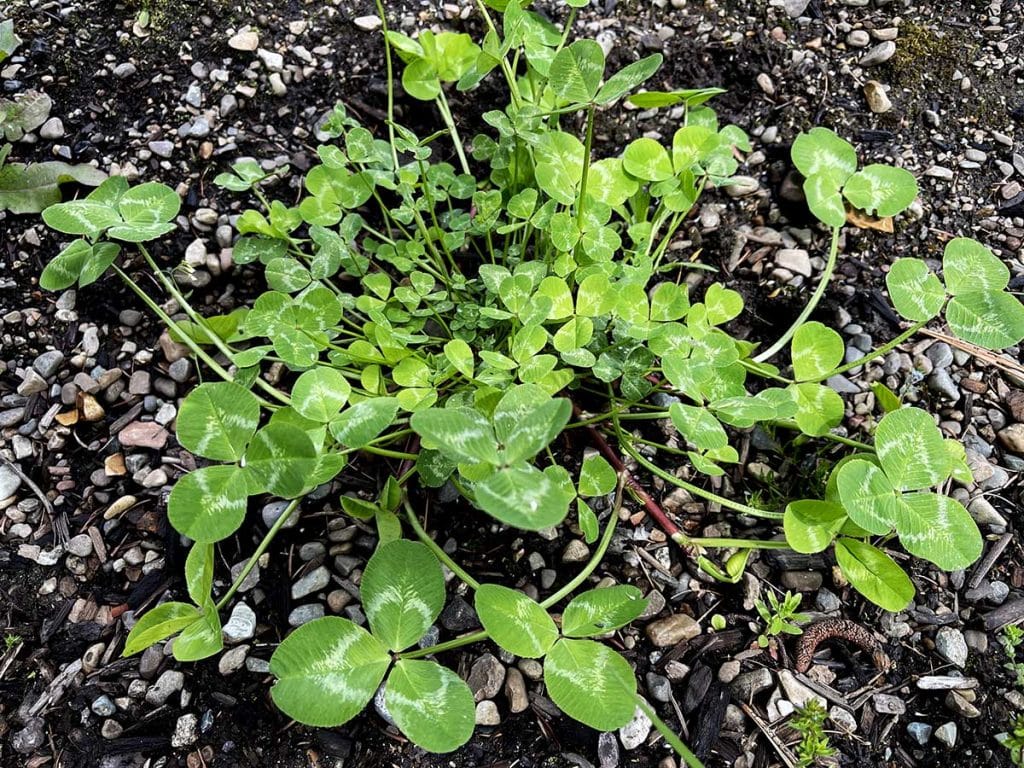
Red clover (Trifolium pratense) is not at all difficult to find here in North Idaho. It grows literally everywhere, including my strawberry patch. I’m always happy to spot the distinctive chevron-striped leaves growing voluntarily in my garden rows, since clover is an excellent nitrogen fixer, adding nitrogen back to the soil. Many gardeners plant cover crops of clover in the early spring and when it’s time to plant, they turn all of the clover back into the soil. This is known as “green manure” and it’s a great way of replenishing soil nutrients that were depleted by the previous growing year.
Red clover is a wonderful herb for moving stagnant lymph and for balancing hormones. The leaves and fluffy flower heads are also a fun addition to an adventurous salad!
Viola spp. / Viola tricolor
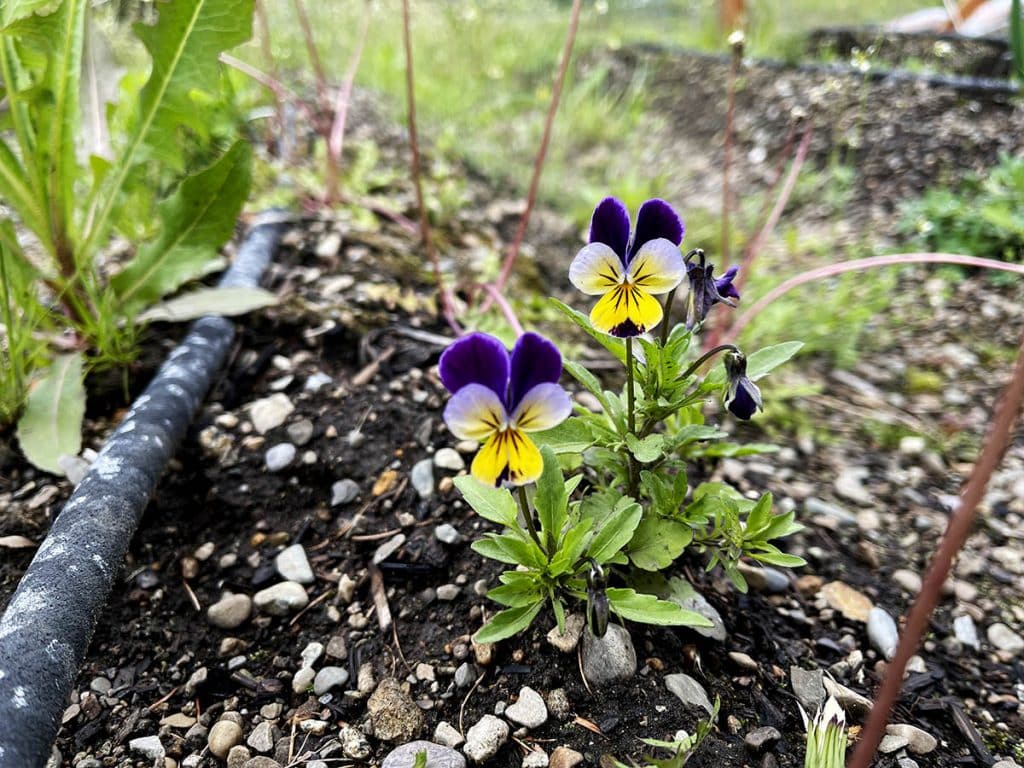
I just love wild violets (Viola spp.) of all kinds, but I’m always excited to come across Johnny jump ups, aka heartsease (Viola tricolor) in the wild. Their happy colorful faces are a pleasure to behold, and their medicine is strong. Like Malva, Viola is also a mucilaginous plant. Energetically cooling and moistening, Viola are useful for making a throat-soothing syrup for sore throats or a dry cough. It’s also a powerful lymph mover that can relieve swollen, congested lymph glands.
Fresh Viola blossoms make a lovely and delicious addition to a spring salad. Try infusing it in champagne or white wine vinegar to create a rich purple preparation that makes a gorgeous salad dressing or oxymel.
This particular happy little Viola was all by its lonesome, so instead of harvesting it, I decided to transplant it to a nearby corner of the garden to (hopefully) be fruitful and multiply.
Verbascum thapsus
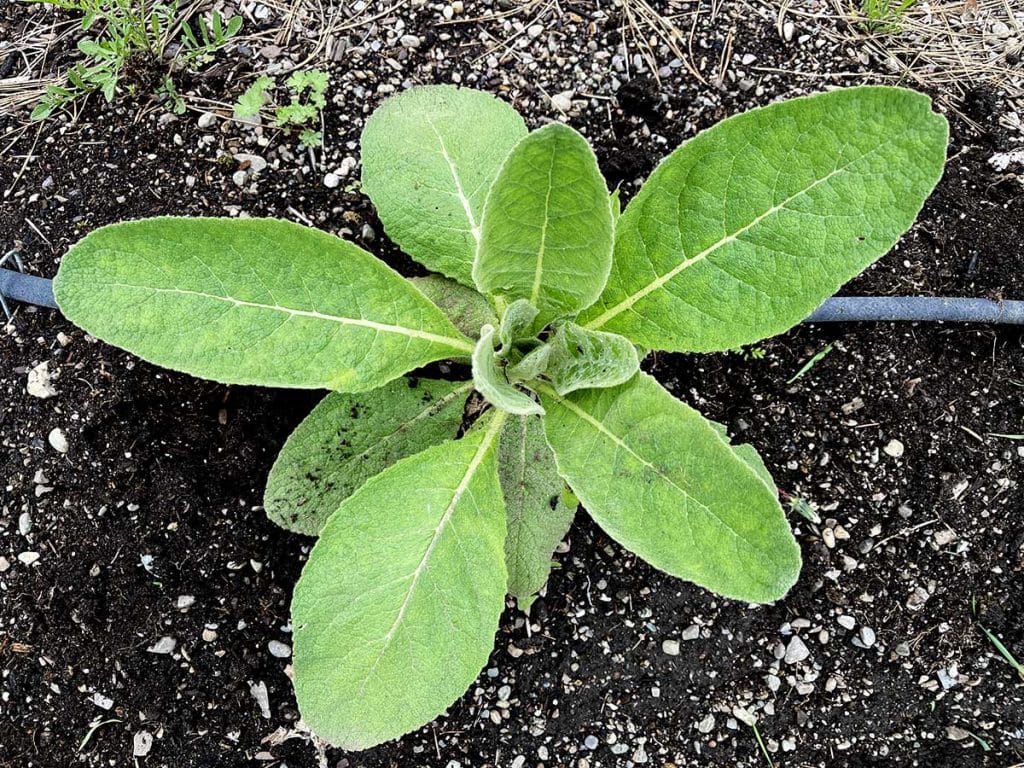
Mullein (Verbascum thapsus) is a weed that many homeowners love to hate. They are considered “noxious” by most states’ departments of agriculture, but they’re one of most useful medicinal plants, specifically for the respiratory system. Mullein is an expectorant, antispasmodic and an anti-inflammatory lung tonic that is supportive for dry, unproductive coughs, wheezing and dry winter sinuses. The tiny yellow mullein flowers infused fresh in oil are also an effective therapy for an earache.
Mullein is a biennial plant, meaning its life cycle consists of two years. The first year, mullein creates a leafy rosette like in the above picture. If you’re looking to harvest leaves for medicinal use, you want leaves from first-year mullein plants (or, in a pinch, second-year mulleins that have not begun flowering yet). By the second year, mullein shifts its energy to focus on creating the tall flowering stalk characteristic of second-year plants. Its medicine is now concentrated in its flowers and no longer in its leaves. So when harvesting mullein leaves, look for the ground-level rosettes without a stalk and leave the second year mulleins to flower and finish its life cycle.
Plantago spp.
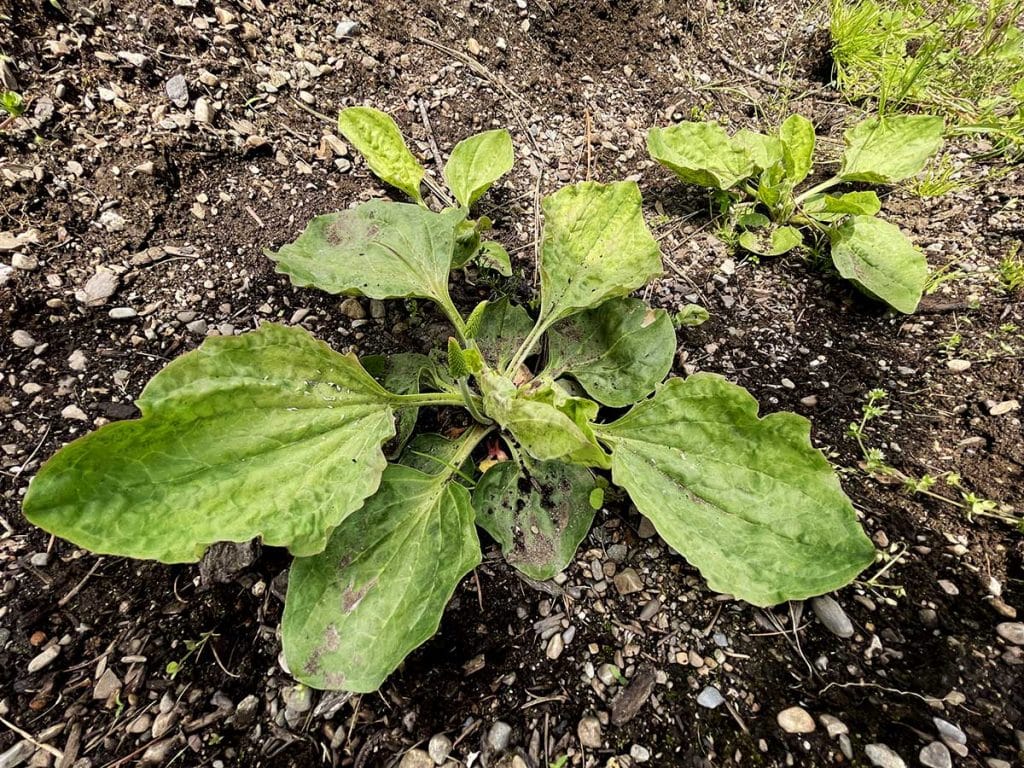
Common plantain (Plantago spp., Plantago major, Plantago lanceolata) tends to grow where it’s needed and is typically found in disturbed soils and along roadsides. It’s a detoxifier of poor soils. Predictably, there was no plantain growing in my grow beds — just in the walkways.
Plantain is probably best known as a drawing herb, meaning it is capable of drawing out foreign objects (such as splinters and stingers) and foreign substances (such as venom from insect/spider bites or fluid from blisters). It’s also useful topically on rashes and minor wounds thanks to its toning (astringent), antiseptic and antimicrobial actions.
Plantain can also be taken internally as a tea or tincture to modulate the body’s histamine response to seasonal allergies or stings. Plantain’s mucilage is also useful for soothing dry, irritated coughs and damaged mucosal lining in the stomach/gut, such as in cases of leaky gut and gastritis.
Berberis repens / Berberis aquifolium
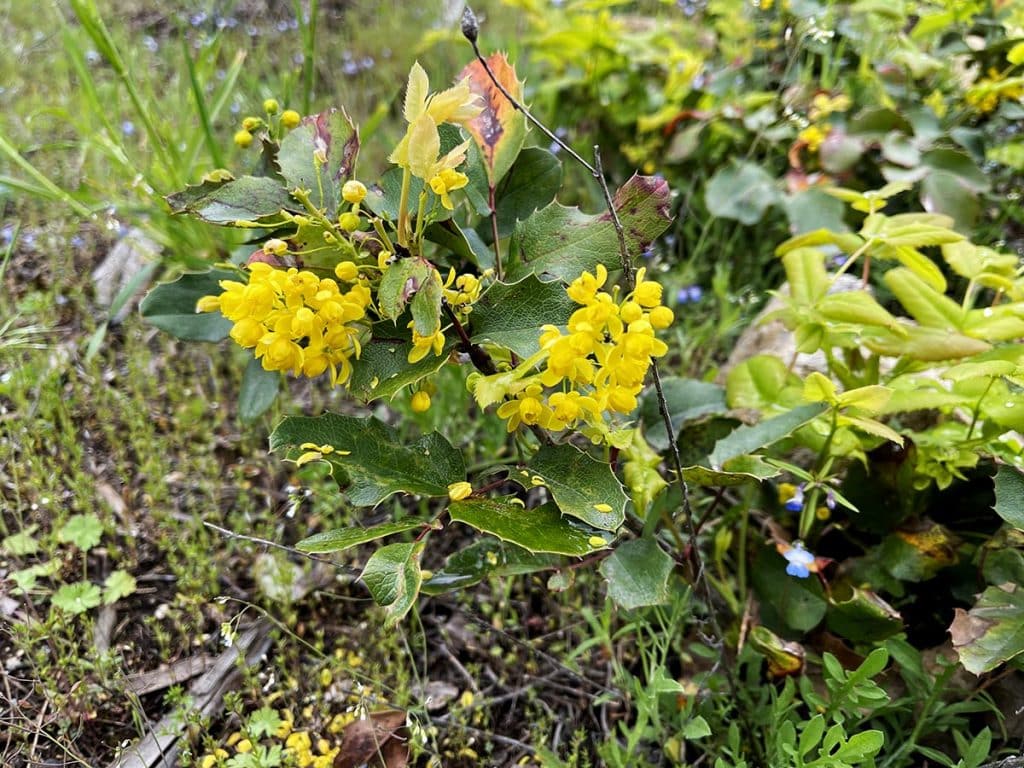
Oregon grape (Berberis repens / Berberis aquifolium) is another “weed” in North Idaho that you can’t throw a stone without hitting. The cultivar we see most commonly in the inland NW is the low-growing Berberis repens, but we occasionally see the taller Berberis aquifolium growing wild too. Both cultivars contain Oregon grape’s primary constituent, berberine, which is present in the roots and inner stem bark. Pull up an Oregon grape plant and scratch away the surface of the root or stem with your fingernail to reveal the bright yellow berberine hiding inside.
Oregon grape is useful as a bitter herb for making digestive bitters and the berries can be made into a self-thickening jam, thanks to its built-in pectin.
Cerastium fontanum
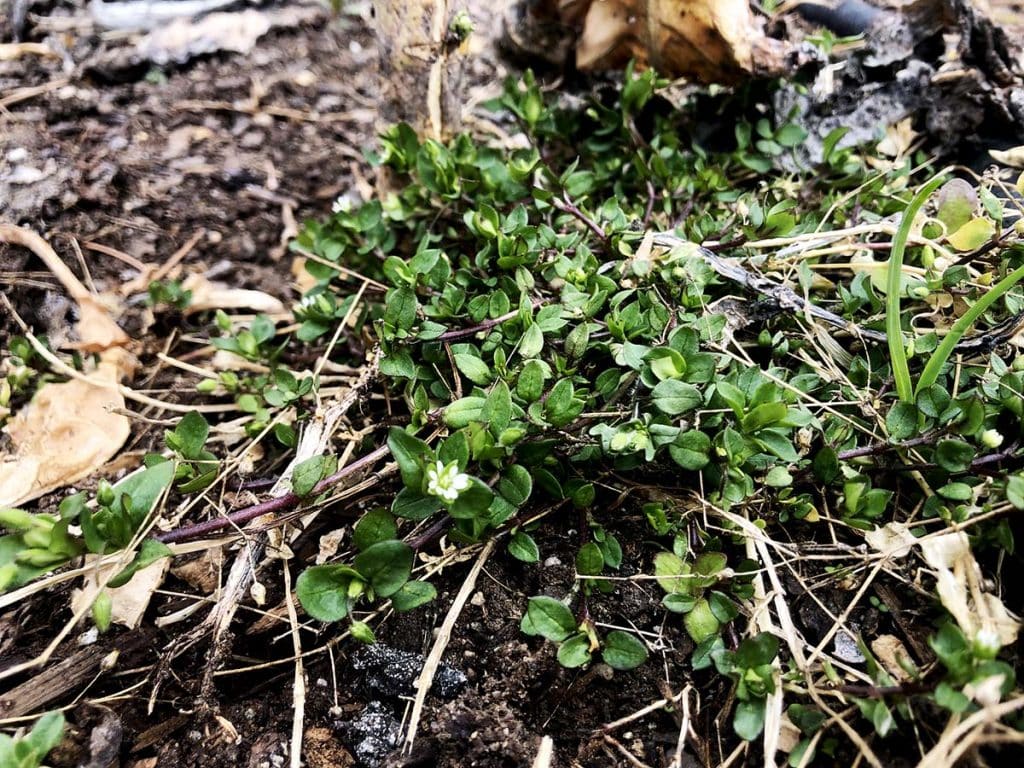
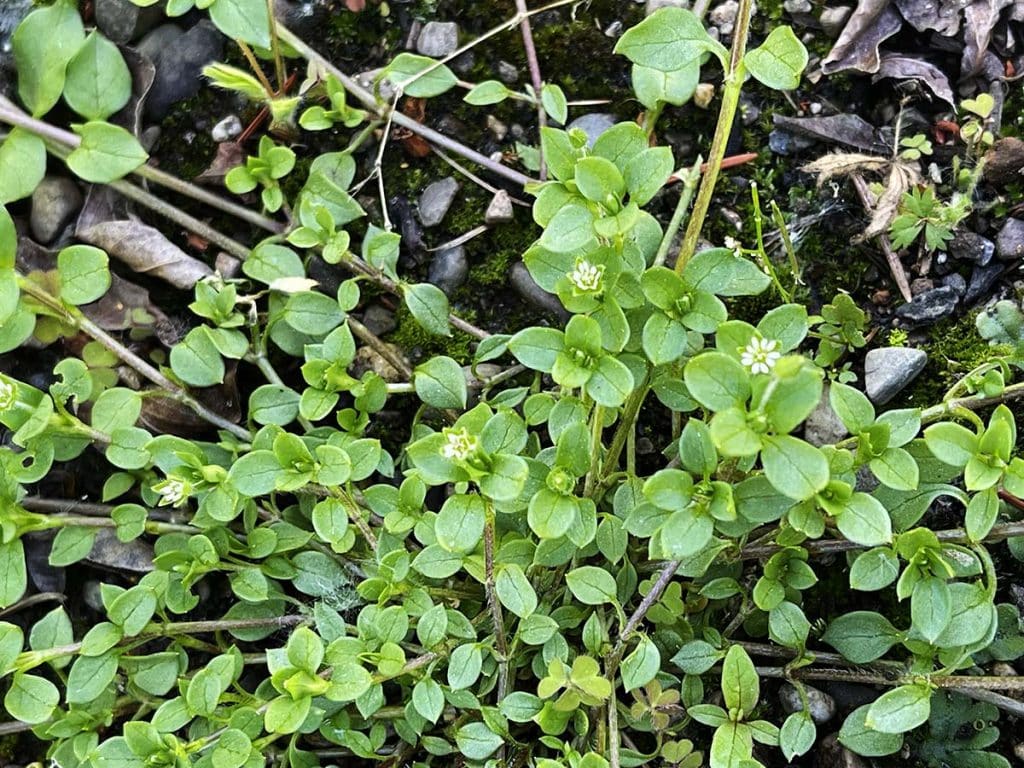
Chickweed’s botanical name means “little star in the middle,” which you can see if you look closely at the center of the flower. It’s easily identified by its distinctive, deeply lobed, tiny white flowers (5 petals that appear to be 10) and a single line of hairs running down one side of the stem. Dismissed by some as an opportunistic garden weed, chickweed is actually a nutrient-dense and moistening herb that makes a nourishing spring tonic and, when infused into oil, a healing salve for rashes and irritations of the skin. ♥

